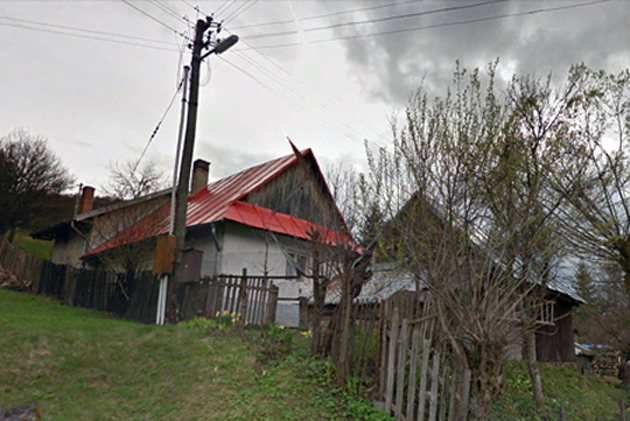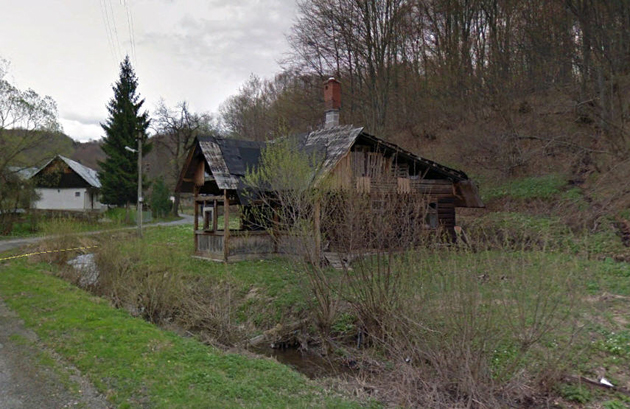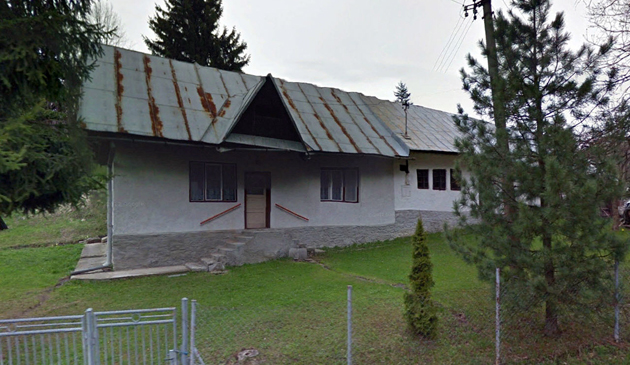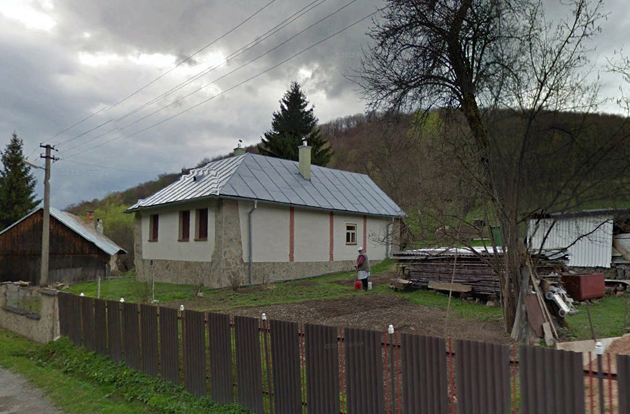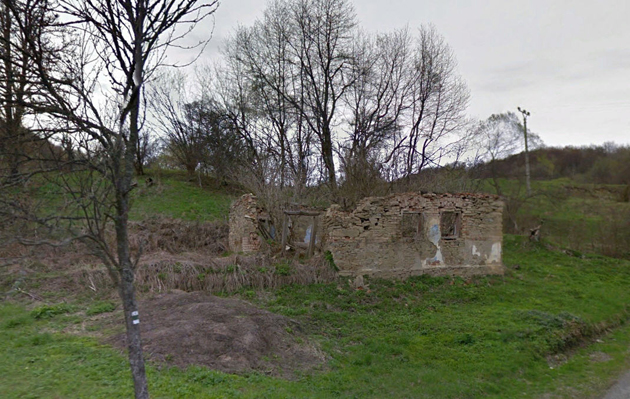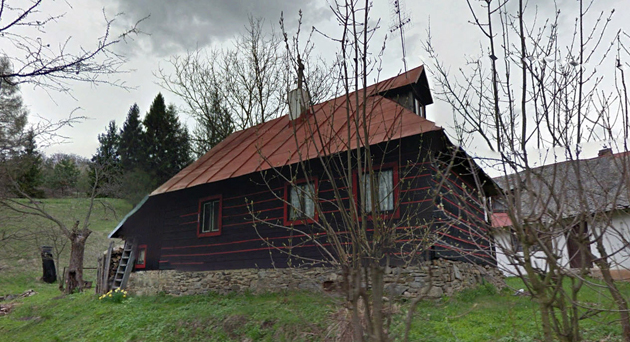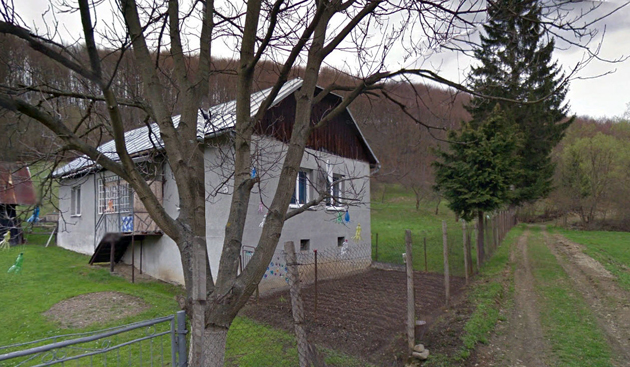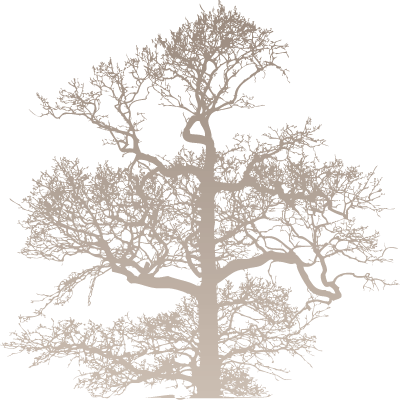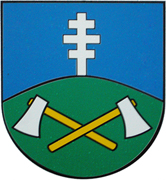
The village of Prikra was organized during the years 1573 through 1598. However, it was not formerly mentioned until 1618 in documentation of the Makovicky estate. The soil was inadequate for abundant farming and the village economy was in a constant state of economic depression. During the years 1715 to 1720 a large percentage of the population left seeking better conditions further south. In 1787 the village had 11 homes and 78 residents. Prikra is located near the present day boarder with Poland. It is within the northern part of the Low Beskid Mountains. Trees of birch and fir surround the area. There are approximately 185 acres of trees, some being over 300 years old. This area of natural fir and beech trees is designated as a protective reserve. During the period of 1828 the village had 19 homes and 143 inhabitants. It is approximately 1,900 miles above sea level. In 1940 the village had 28 homes and 160 residents who worked as farmers. There are 3 miles of rivers which run throughout the village. The symbol utilized for Prikra is a blue shield with a silver cross and three straight bars. During the 20th century Prikra was severely damaged during World War I. After this period a majority of the village left for immigration to the United States. During November of 1944, there was heavy fighting in the region and again, the village was severely damaged. In 1947, more residents decided to immigrate to the Soviet Union. Today, what few individuals left in Prikra are mainly elderly pensioners.
Church:
The following photos provided by, The Greek Catholic Archbishop of Presov
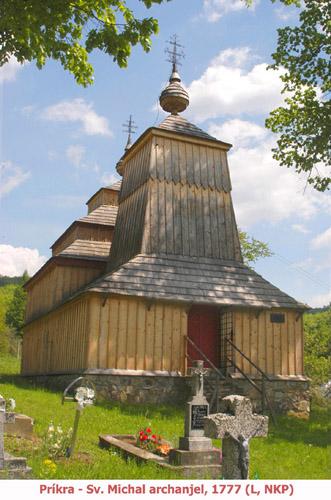
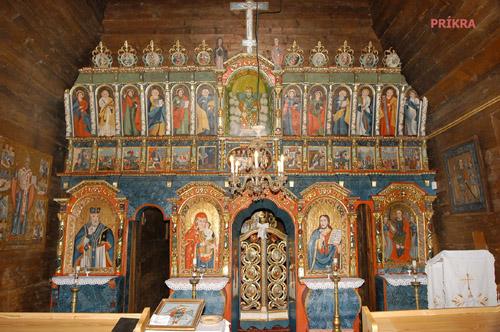
The Greek Catholic Church of Saint Michael was built in 1777. It is a three part wooden edifice and sits on a stone foundation. The iconostasis is made of carved and painted wood. It dates from the second half of the 18th century and has four rows. The church is adorned with various icons/paintings and some date from the 17th century. The church was rebuilt in 1902 and again during the period of 1946-1947. During 1930 a chapel dedicated to the Virgin Mary was constructed. The last renovation of the church was performed during 2001-2002. The altar is carved wood and has a red and gold frame with an inset painting of the crucifixion. To the left of the altar (table of preparation) is a wooden framed painting of the agony in the garden. The altar area proper is very narrow and small in size. The original church had three bells and today one still dates from 1759. Two new bells were added during the 20th century with funds collected by the Greek Catholic parishioners. The village cemetery is directly in front and to the left side main entrance of the church. During 1968, the church was listed as a historical monument.
Village Statistics
Names:
There have been different names for the village over time:
1773-1808, Prikra, 1808-1863, Brikwa, 1863-1907, Prikra, 1907-1920, Meredely, 1920-1927 Prikra and since 1927 the name has remained Prikra.
District:
Prikra was part of the former Saros County, District of Swidnica (present day Svidnik.) It was later incorporated into the Presov region. In 1960 it was removed and placed in the Bardejov district. Since 1968, the village was returned to the Svidnik district.
Population:
1869-122 inhabitants, 1880-106 inhabitants, 1890-114 inhabitants, 1910-107 inhabitants, 1921-131 inhabitants, 1930-146 inhabitants, 1940-160 inhabitants, 1948 - 143 residents, 1961-113 inhabitants-1970-73 inhabitants. As of the 2014 Statistical Office of the Slovak Republic census, there were under a dozen inhabitant’s residing in Prikra. The elected Mayor was Jan Brenisin who received 5 votes. The village population gives Prikra the distinction of being the least populated village in all of Slovakia. Due to its size, a travelling grocery store visits the village twice a week.
Surnames:
Surnames found in the village during the 1980’s were Blicha, Brenisin, Derco, Goldir, Greslik, Hrib, Hrinko, Hromoho, Malinchak, Mitruska, Sluk, Suvak and Volcko.
Notable Personalities:
Stefan (Steve) Capko
Born in 1970 in Kosice. He performed as a clown, mime, actor, choreographer, director and playwright and resided in Prague. His parents, Stephen Cap and Helena (nee Blichova) were born in Prikra and he spent his holidays with them in the village.
Google Earth Images
